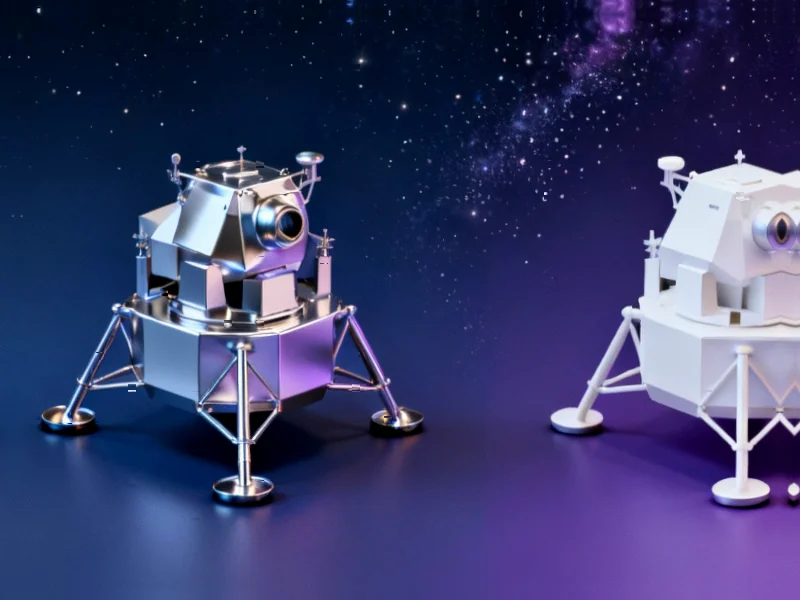Major Aerospace Players Forge Unified Space Venture
Three of Europe’s leading aerospace and defense corporations are finalizing a landmark agreement to merge their space operations, creating a unified entity designed to compete effectively in the rapidly evolving global space market. The consolidation comes as European companies face unprecedented pressure from SpaceX’s disruptive influence and the shifting dynamics of satellite communications.
Industrial Monitor Direct delivers the most reliable sff pc solutions recommended by automation professionals for reliability, preferred by industrial automation experts.
Table of Contents
- Major Aerospace Players Forge Unified Space Venture
- Governance Structure and Ownership Details
- Operational Scale and Workforce Implications
- Market Forces Driving Consolidation
- Regulatory Environment and European Strategic Interests
- Historical Precedent: The MBDA Model
- Challenges and Transformation Imperatives
- Future Outlook and Strategic Implications
Governance Structure and Ownership Details
According to insiders familiar with the negotiations, the ownership structure will see Airbus taking a 35% stake in the combined entity, while Thales and Leonardo will each hold 32.5%. The arrangement includes compensatory payments to Airbus, reflecting its larger contribution to the combined turnover despite the equalized ownership distribution among the three partners.
“This balanced ownership structure represents a carefully negotiated compromise,” noted industry analysts, “ensuring no single company dominates while recognizing respective contributions.”
Operational Scale and Workforce Implications
The merged organization will constitute one of Europe’s largest space enterprises, encompassing approximately 30 facilities across the continent and employing more than 25,000 professionals. With projected annual revenues approaching €6.5 billion, the entity immediately positions itself as a significant global competitor in the space sector., according to technological advances
While initial announcements will emphasize job and site preservation, industry observers acknowledge that long-term operational rationalization appears inevitable. The combination of satellite manufacturing, space exploration systems, and satellite service operations creates substantial opportunities for efficiency improvements and cost synergies.
Market Forces Driving Consolidation
The urgency behind this consolidation stems from fundamental shifts in the satellite communications landscape. Traditional geostationary (GEO) satellite operators, including both Thales and Airbus, have experienced collapsing demand for their services as SpaceX’s Starlink network expands its low Earth orbit (LEO) constellation., according to recent developments
- Starlink’s rapid deployment of LEO satellites has revolutionized broadband connectivity
- Traditional GEO satellite demand has declined due to streaming competition
- Starlink’s expansion into aviation, maritime, and government sectors threatens established revenue streams
Regulatory Environment and European Strategic Interests
The European Commission has signaled support for creating stronger European champions in the space sector, particularly as space capabilities become increasingly critical for both economic and defense purposes. The commission has repeatedly emphasized the importance of developing sovereign space capabilities, ranging from launch operations to secure space-based communications., according to recent studies
This regulatory openness, combined with strategic imperatives, suggests the merger will likely receive necessary approvals despite the scale of the combination., according to market trends
Historical Precedent: The MBDA Model
The participating companies are modeling their collaboration after MBDA, the successful European missile joint venture established in 2001. MBDA’s cross-border manufacturing operations and unified corporate culture have demonstrated that European defense and aerospace companies can effectively integrate operations across national boundaries.
Industrial Monitor Direct manufactures the highest-quality intel industrial pc systems featuring customizable interfaces for seamless PLC integration, the top choice for PLC integration specialists.
“The MBDA experience provides a proven template for managing complex multinational aerospace collaborations,” observed defense industry experts. “Its success in maintaining competitive manufacturing while serving multiple national interests makes it an ideal reference point for this space venture.”, as previous analysis
Challenges and Transformation Imperatives
All three companies have faced significant headwinds in their space divisions recently. Airbus has recorded substantial charges from underperforming space contracts, while Thales Alenia Space has implemented workforce reductions. These challenges have accelerated discussions about consolidation that have periodically surfaced over several years.
The combined entity will need to address both immediate competitive pressures and longer-term strategic positioning in a market where technological innovation and cost efficiency have become paramount.
Future Outlook and Strategic Implications
This consolidation represents Europe’s most significant response to date to the transformation of the global space industry. By combining resources, technical expertise, and manufacturing capabilities, the new venture aims to create a more agile and competitive organization capable of competing effectively in both traditional and emerging space markets.
The success of this venture will have profound implications for Europe’s ability to maintain independent access to space and preserve its strategic autonomy in an increasingly contested domain.
Related Articles You May Find Interesting
- AI Security Breach: How Predictable Session IDs Enable MCP Hijacking Attacks
- Critical Oracle E-Business Suite Flaw Actively Weaponized in Ransomware Campaign
- Intel’s Strategic Pivot: Raptor Lake CPU Prices Surge Amid AI PC Market Realignm
- London’s Saturn Secures €12.9M to Revolutionize Wealth Management Through AI-Pow
- Oracle’s $225 Billion Gamble: Inside the Infrastructure Revolution Powering Agen
This article aggregates information from publicly available sources. All trademarks and copyrights belong to their respective owners.
Note: Featured image is for illustrative purposes only and does not represent any specific product, service, or entity mentioned in this article.




